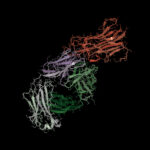“This is just the beginning of an explosion of biosimilars,” Dr. Kvien said. “So if people are saying, ‘I’m against biosimilars, then you are against something that will happen in the future.”
But Dr. van Vollenhoven said the rise of biosimilars is not simply a movement that will advance unabated and cannot be stopped. Rather, he said, the development of biosimilars should be undertaken with some realization of the potential downsides.
Just 20 years ago, he reminded the audience, treatment for rheumatoid arthritis worked well for some patients, but for many others, they did not work well at all. Now, there are drugs available that span five mechanisms of action and “only rarely is a patient doing outright terribly badly.”
These advancements have come because of great investments by pharmaceutical companies in research and development. And the only reason that biosimilars cost less than their originator drugs is that less money has been spent on the research and development that has led to the biosimilars’ approval.
With the arrival of biosimilars, “research and development will be less. In the end, that’s where the money comes from, nowhere else.”
He said the lower cost and the expanded accessibility of biosimilars is something to be cheered, but added, “I have to honestly say that I have been surprised a little bit by how excessive the cheering has been in some rheumatology circles.”
He also expressed concern that, with so many biosimilars being made, regulators will be hard pressed to stay on top of the manufacturing process, raising the possibility of problems with the final product.
“I’m a little bit worried that if the production of these medications is going to be taking place in so many different places in so many different plants, who’s actually keeping an eye on this?” he said. “I haven’t seen that the EMA [European Medicines Agency] has a quadrupled budget for monitoring and overseeing this.”
Dr. van Vollenhoven’s comments stirred some controversy. One audience member said that he failed to draw a distinction between biosimilars—well-understood and well-characterized drugs—and so-called “bio-mimics” from far away, unregulated manufacturing plants.
Arnold Vulto, PharmD, PhD, professor of hospital pharmacy at Erasmus University Medical Center, said the system on biosimilar manufacturing has been refined over time, and that changes to the manufacturing process now have to be well documented. He also said the advent of biosimilars has tended to open up the knowledge of how these pharmaceuticals work and are made.

